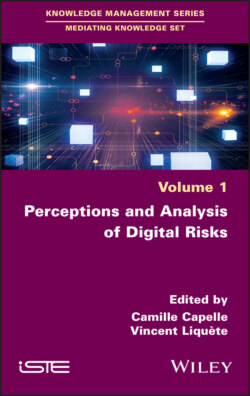Читать книгу Perceptions and Analysis of Digital Risks - Группа авторов - Страница 14
1
Digital Risks: An Obstacle or a Lever for Education? 1.1. Introduction
ОглавлениеGiven the challenges of new technologies that society must face, the notion of risk has become a difficult one to grasp, because it refers to dreaded events and individuals’ worries and fears. For the sociologist Ulrich Beck (2008), risks no longer come only from outside (natural risks). Modern society, with its technological progress, in particular, generates risks in the sense that it debates them abundantly and seeks to prevent them in increasingly optimal ways: this is the emergence of a “risk society”. The introduction of digital technology into schools and families has generated numerous myths (Musso 2008; Amadieu and Tricot 2014) and unfounded fears (Cordier 2015; Plantard 2016) that are also widely debated. Digital refers in discourse both to computer tools or techniques (Internet, computers, smartphones, web platforms, etc.) and to uses. Indeed, the digitization of many practices has increased the number of situations in which digital tools are used, be it for information, communication, transmission and so on. Students, as well as teachers starting their careers, are now part of a generation that has grown up with the evolution of digital technologies and has built its practices and representations around them.
This leads us to examine the conceptions of digital technology among this new generation of teachers and the status they grant to digital literacy. In this chapter, we propose characterizing different types of digital risks and subsequently compare them with the perceptions of teachers at the beginning of their career. The objective is to understand how these representations around the notion of “digital risks” can be a brake or a lever for educating young people about digital issues.
This text builds on the research of the eRISK project, Digital Risks and Education 2.0, which was conducted between 2016 and 2019 with the support of the Maif Foundation.
First, we will define the notion of “digital risk” and characterize the diversity of risks that may correspond to this notion. We will then see which risks school faces with digital technology. We will then present the methodology used to collect the representations and declared practices of new teachers regarding these risks. Finally, a third section will be devoted to the analysis of the teachers’ representations and practices and to a reflection on the impact these have on the education of students in the digital world.
